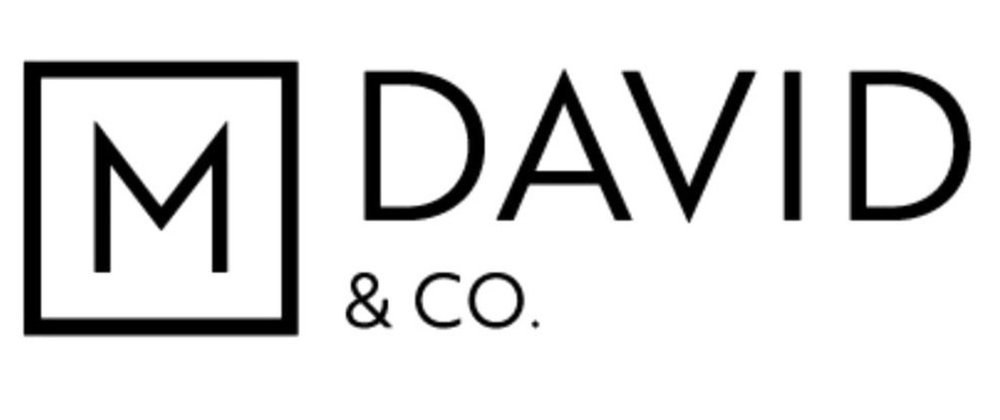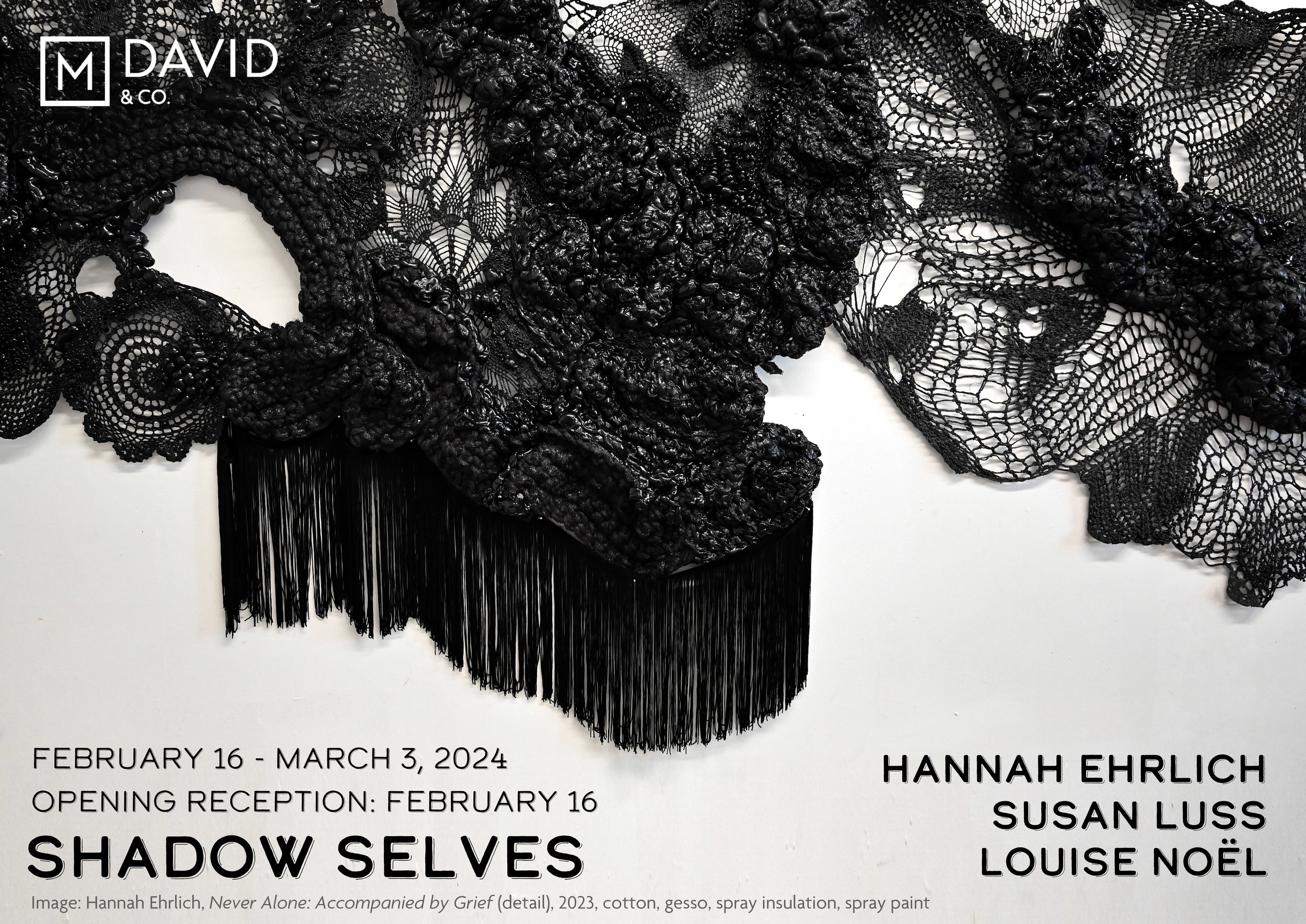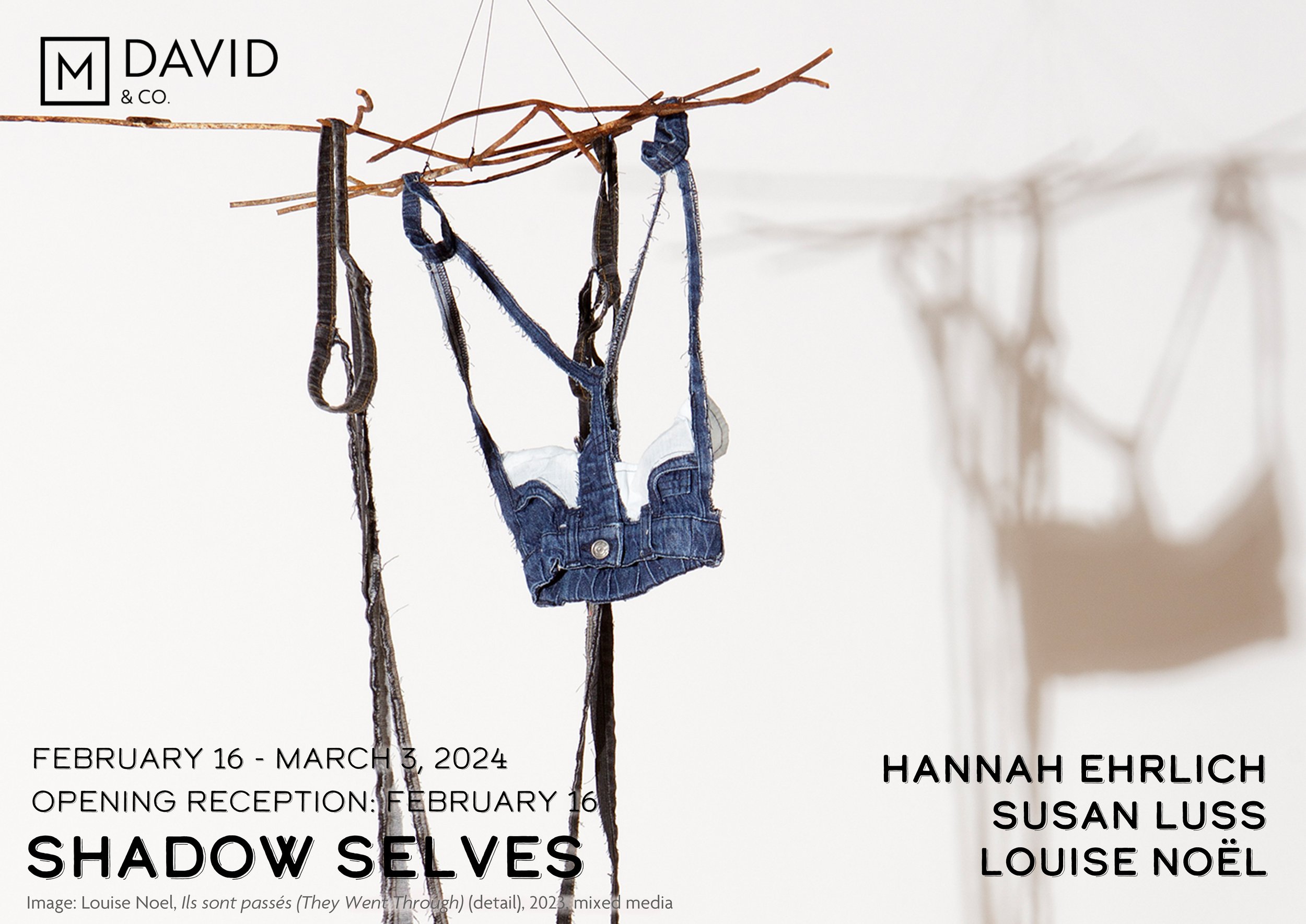Shadow Selves
Featuring work by Hannah Ehrlich, Susan Luss, and Louise Noël
Exhibition text by Paul D’Agostino
February 16 - March 3, 2024
Opening reception: Friday, February 16, 6 - 9 PM
Shadow Selves: Revealing Otherness
by Paul D’Agostino
Just as shadows themselves can manifest in manifold ways according to shifting circumstances, so too can expressions of, and understandings gained through, shadow selves. Such aspects of self might be those we conceal or obscure in order to shroud them in secrecy. They might be matters we strive to unknow or bury through modes of suppression. They might be memories or characteristics we acknowledge as extant, yet consider to be of secondary importance or presence – as impressions of things we bear in mind, or impressions we believe to have left behind. Our shadow selves might also be those we come to terms with, over time, by sharpening our senses of self-awareness, or by simply becoming more comfortable in our own skin. This might entail recognizing an interdependent rapport between our objective realities and how we shed light upon them, alter their forms, trace their contours, construe them for what they are, or try to illuminate them in revelatory ways through modes of cognitive, or perhaps artistic, abstraction.
The featured artists in Shadow Selves – Susan Luss, Hannah Ehrlich, and Louise Noël – bring all such concerns to bear in this tightly curated exhibition of assemblage sculptures, site-specific installations, and works on paper. Working in a range of media yet within a markedly kindred aesthetic, these artists take into consideration craft traditions and labor norms; notions of self as contained by and refracted through the body; the layered histories of objects and materials, especially through acts of upcycling, alteration, and repurposing; and variable expressions of corporeality and female agency. Luss, Ehrlich, and Noël position themselves as active conduits of familial histories, childhood memories, personal experiences, contemporary social and political issues, and variably inflected visions of the future, and they channel these diverse themes into their art. The creative selves they carry into their work become marks made, forms configured, figures hidden and found, gestures transposed, and energies transferred. As such, the visual yields of these processes of transference are where their notions of self emerge, cohere, and come to the fore. Rather than hiding, or hiding from, their shadow selves, these artists opt to embrace, collaborate with, and learn from them – and to convey traces of them to receptive viewers.
This sense of collaboration is of paramount importance for all three artists. Theirs is a metaphorical understanding of the term; they interpret it as a practice of collaboration not with other artists to make artwork, but as a collaborative mindset in their relationship with their operative materials, concepts, and circumstances. Rather than merely implementing these things in their work, they imagine themselves engaging with, acting through, and working alongside them. For Susan Luss, collaboration entails working with light, surfaces, an array of liquid media, various types of mark-making techniques, and all manner of fluctuating spatial considerations in the creation of colorful, large-scale textile installations. In As Above, So Below, a sprawling horizontal work designed with site-specific alterability in mind, the artist’s chromatic muse is a range of mostly deep blues, and her expansive, gesturally restive marks are circular, radial, astral, loosely linear, dispersive, and constellational. Surface texture, ambient light, and formal interruptions become crucial aspects of this immersive work’s visual experience through the artist’s carefully considered deployment of drapery, pleating, and folds, such that the shadows resulting from registers of relief become linear interventions in their own right – linearities of variable lightnesses and depths, all consistently subject to change according to transient luminosities. Luss considers her body and the canvas to be one and the same while working, the latter ostensibly molding around the former before emerging as a form of its own. The yields of these multifarious processes here, from the making of marks to the metaphorically molded forms, present as a mysteriously rendered map of the night sky – a vast diffusion of nebular dusts settling into place according to some unknowable force of cosmic ordering.
Relief shadows, limited palettes, site-specificity, large scales, and a collaborative relationship with surfaces and materials are key concerns for Hannah Ehrlich as well. Working with repurposed doilies to create somewhat gently imposing, organically expansive sculptural installations that crawl up, down, all along, and off of walls, sometimes meandering down and out to creep along floors as well, Ehrlich imagines her artwork to be a collaboration with history, too, and tradition – a sense of collaboration that means working with, but also reworking, working through, and working against. In Never Alone: Accompanied by Grief, the artist seeks to extract beauty from the shadowy depths of a dolorous spectrum of emotive experience. Ehrlich dips individual doilies in black gesso and mounts them together – one at a time into sections, then one section at a time into broadened extensions – resulting in elegantly amorphous outgrowths that appear to proliferate as biomorphically multicellular units, pulsating insistently with enigmatic vitality. And yet, given their pitch-like aspect, these vacillating units also seem to mark the waning or vestiges of life. The artist incorporates other black-gessoed materials into the doily structure as well, while also suturing selected areas together with a free-flowing, non-conforming, rule-breaking crochet technique. For Ehrlich, repurposing doilies and reinterpreting crochet, both emblematic of a vast array of weaving histories, are tantamount to reclaiming craft traditions materially while undermining or reforming them conceptually – deploying very differently, even proactively exploiting a questionable index of femininity by reappropriating and reconfiguring it from the ground up.
While Louise Noël shares many of the same conceptual concerns and ideas of material collaboration with Ehrlich and Luss, her relationship to scale, expressive registers, and implicit references to corporeality are quite different. Noël’s series of assemblage sculptures collectively titled Je ne connais pas son nom (I Do Not Know Their Name) are utterly spare, skeletally present, and delicately displayed – hanging lightly from the ceiling, as if incidentally, or dangling openly before walls, as if drying out. Indeed, an image of makeshift clotheslines here is not inapplicable, as Noël’s source materials are unmistakably aged, wholly reconfigured, nimbly repurposed articles of clothing. The artist’s use of previously owned garments is a cultivated choice. For her, these items have not only been owned and used by others – and unknown others, at that – but they have also covered those others’ bodies in one way or another, adorning or even protecting them, taking on their forms and contours, perhaps even preserving traces of their oils in their fibers. As such, these garments carry forth something of their previous owners’ identity even in their owners’ absence – material shells as shadow selves, auratic manifestations of disembodied otherness. Noël works meticulously to turn blouses and other pieces into peacefully ghostlike presences that scan as line drawings both materially and immaterially – the remnant linearity of the material of the articles of clothing, and the shiftily linear suggestiveness of the shadows they cast. Noël collaborates with the garments’ histories and, at a remove, with the garments’ erstwhile owners to breathe new life into items that have fallen into disuse. Consequently, the pieces themselves, no longer fallen but raised into space, collaborate with the shadows they cast to flesh out and enhance one another’s salient attributes. The spareness of form and senses of silhouette-like, shadowy substantiality inherent to Noël’s assemblages are palpable in her scrupulously crafted works on paper as well, in which rich, intuitively applied washes of walnut ink appear patently abstract yet innately figurative.
In Shadow Selves, senses of self, senses of others’ selves, and senses of othered selves come into material confluence. As evidenced by their works in this carefully curated show, Susan Luss, Hannah Ehrlich, and Louise Noël employ and collaborate with shadows both real and metaphorical to suggest the presence of bodies where bodies no longer are, and to illuminate lingering traces of histories that were – and that might yet, in reconfigured forms, endure. Shadowy aspects of self might be held in secret, suppressed, or obscured. Yet they might also be channeled into artworks to free them from the shade of confinement – releasing them into the world to cast revelatory light on life.
– Paul D’Agostino, PhD is an artist, writer, curator, educator, and translator. You can find him on Instagram and Threads @pauldagostinostudio.
Susan Luss, As Above So Below (detail), 2023, canvas, dye, rope, bricks, wood, bones, seeds, brush, wire, dimensions variable
Susan Luss, (b. 1959, El Paso, TX) is an inter-disciplinary artist living in New York City, maintaining a studio in East Williamsburg, Brooklyn. Luss works with a range of materials and media. She intermixes and assembles these, creating adaptable work engaging the architecture of space, environment, natural forces, and shifting light. Her large-scale paintings on canvas, distillations of her urban wanderings, both physical and psychological, transform through environmental intervention.
Luss received her MFA from the School of Visual Arts, New York, and her BFA in Studio Arts Painting from Pratt Institute, Brooklyn. Luss has exhibited her work at various venues in the New York area and beyond, including Museum of Art and Culture, New Rochelle, NY, Lowe Mill A&E in Huntsville, AL, The Knockdown Center, and Sideshow Gallery in Brooklyn, The Hole in NYC, Haverstraw RiverArts in Haverstraw, NY, Garner Arts Center in Garner, NY, Westbeth Gallery and The Painting Center in NYC, among others. Luss has curated exhibitions at Pratt Institute, Westbeth Gallery, and Aaron Davis Hall, City College of New York. Luss’s work is held in public and private collections including Pratt Institute, Brooklyn, and LaTable des Artists, Paris, among others.
Hannah Ehrlich, Never Alone: Accompanied by Grief (detail), 2023, cotton, gesso, spray insulation, spray paint, dimensions variable
Hannah Ehrlich (b. 1994) is a textile artist from Atlanta, Ga and is currently living and working out of Atlanta, GA. She received her BFA in Textile and Fiber Arts from Lamar Dodd School of Art at the University of Georgia in 2017. Hannah has exhibited most notably at Sotheby’s Institute of Art in New York, NY, M. David & Co, in New York, NY, Museum of Contemporary Art Georgia, Marietta Cobb Museum of Art, Swan Coach House Gallery in Atlanta, GA, and Athica Athens Institute in Athens, GA, along with installations at Hartsfield-Jackson International Airport in Atlanta, GA and The Buckhead InterContinental Hotel in Atlanta, GA. During the summer of 2023, she participated in the NARS Foundation Season III International Residency program in Brooklyn, NY. Her work has been published in Art Papers, ArtsATL, Voyage ATL, and Atlanta Magazine. Hannah’s practice includes traditional textile techniques, painting, sculpture, and installation.
Louise Noël, Je ne connais pas son nom (I Do not Know their Name) #1, found shirt (cotton and polyester), metal wire, tread, 12 x 39 x 6 inches
Louise Noël was born in Montreal, where she lives today. Her first career was in social work. She has taught about and written two books on Attachment Theory, the evolutionary survival process by which children develop the emotional bonds essential to life with the adults taking care of them.
Beginning in 1990, Louise Noël studied classical drawing and oil painting. In 2013, she started using encaustic. Since 2018, she takes part in residencies and in a mentorship process with a renowned artist. She now works full-time in the studio. She is an associate member of the Regroupement des artistes en arts visuels du Québec (RAAV) and Canadian Artist Representation/Le front des artistes canadiens (CARFAC). She speaks French and English.
Press:
Press release
















